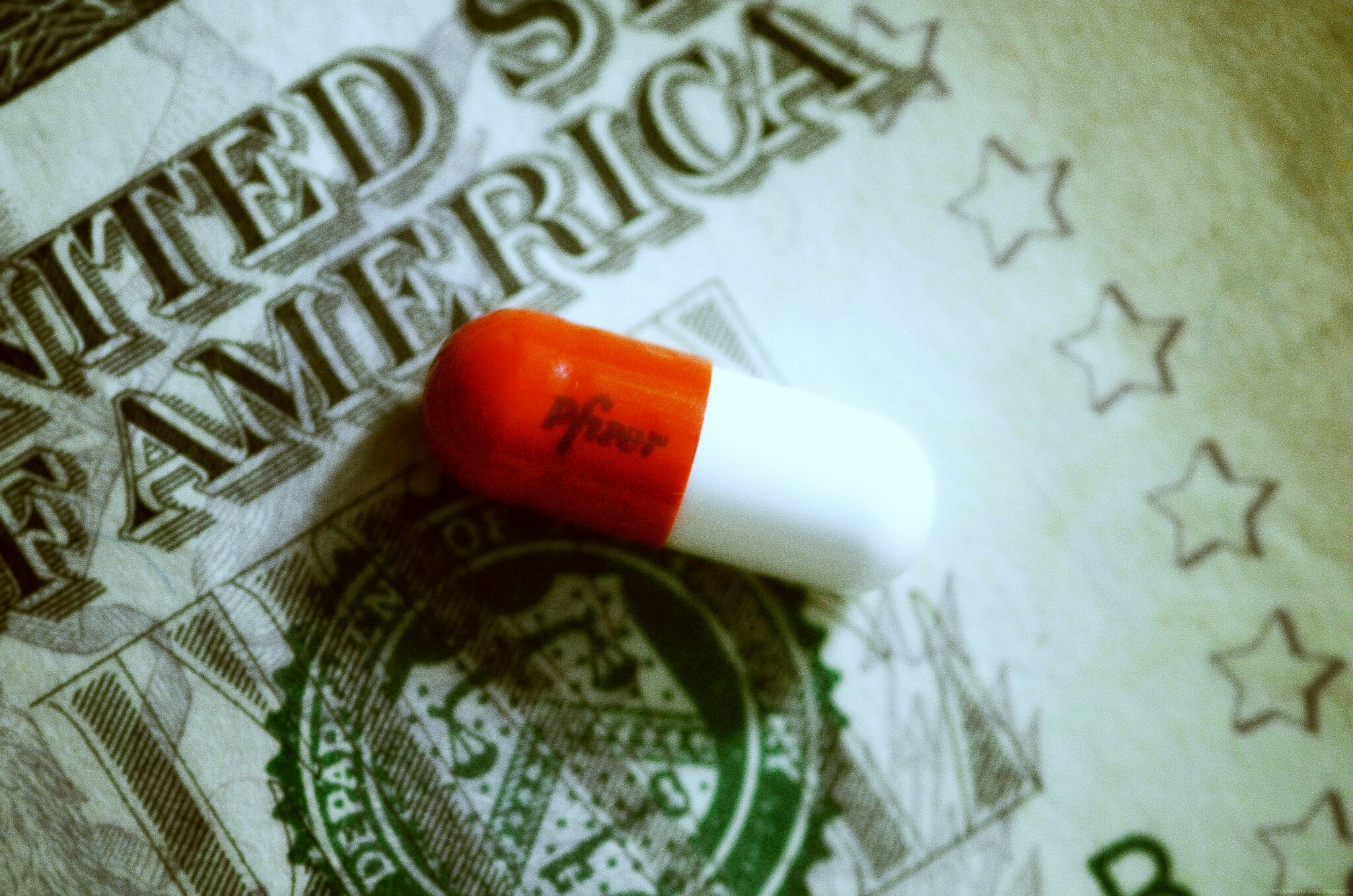Oliver Wouters, a researcher from the London School of Economics, recently published research analyzing the lobbying expenditures and election contributions of pharmaceutical and health product industries. His results, published in JAMA Internal Medicine, reveal that the pharmaceutical and health product industries spent a total of $4.7 billion on lobbying the federal government, $877 million on state candidates and committees, and $414 million on presidential and congressional electoral campaigns, national party committees, and outside spending groups between 1999-2018. This spending was paralleled by an increase in per-person spending on prescription drugs from 1999 ($510/person, adjusted for inflation) to 2017 ($1025/person, adjusted for inflation).
“When considering legislative and policy initiatives, Congress and the executive branch benefit from fully considering the interests of all parties in society, not just those who seek to improve their access to officials through campaign contributions and lobbying expenditures,” Wouters writes.

Wouters retrieved data from the Center for Responsive Politics and the National Institute on Money in Politics, both of which are non-profit, non-partisan organizations that track federal and state campaign donations as well as lobbying expenditures. He also assembled data from the Senate Office of Public Records, who retain data on federal lobbying expenditures, and the Federal Election Commission, who house data on election campaign contributions.
For each of the 20 senators and representatives who received the most pharmaceutical and health product industry contributions, Wouters utilized records from the US Government Publishing Office to see whether they served on a committee or subcommittee that had authority over health-related legislation. Most states did not have data on state-level lobbying costs, and as a result, were not included in the analysis. The National Institute on Money in Politics, however, does collect data on pharmaceutical and health product industry campaign contributions for gubernatorial or other state candidates, house, assembly, or senate candidates, supreme court candidates, political party committees, and ballot measure committees.
Wouters found that a total of $64.3 billion was spent lobbying Congress and other federal agencies from 1999-2018, of which the pharmaceutical and health product industries spent the most: $4.7 billion, or 7.3% of total lobbying, for an average of $233 million per year.
17 of the 20 highest spending organizations within these industries were biological or pharmaceutical product manufacturers or were in their trade associations, of which the top spender was the trade group Pharmaceutical Research and Manufacturers of America (PhRMA; $422 million). The insurance industry spent the second most, at $3.2 billion, or 5% of total lobbying. The health care industry as a whole spent $9.7 billion.
The pharmaceutical and health product industries spent a total of $414 million on federal presidential and congressional candidates, national party committees, and outside spending groups. $367 million of that total was appropriated to party candidates, of which $216 million went to Republicans (58.9%) and $151 million to Democrats (41.4%). 15 of the highest spending organizations within these industries were biological or pharmaceutical product manufacturers, with PhRMA again making the list.
Five pharmaceutical companies made the top ten spending list for both campaign contributions and lobbying, including companies like Pfizer and Amagen. Congressional candidates received $214 million, while presidential candidates received $19.3 million from individuals and political action committees in the pharmaceutical and health product industries.
The top 40 recipients from each chamber of Congress received $45 million of all contributions to congressional candidates, and were well represented in leadership positions: 39 were members of committees with control over health-related legislation, and 24 held senior-level positions in these committees.
From 1999 to 2018, the pharmaceutical and health product industries contributed a total of $877 million to state-level candidates and committees, of which the majority ($661 million) went to ballot measure committees. There was not an even distribution between states: California received $399 million, Ohio received $74 million, and six other states received between $20 and 50 million: Missouri ($43 million), New York ($33 million), Oregon ($27 million), Florida ($26 million), Illinois ($23 million), and Texas ($22 million).
Funding tended to follow ballot measures – for instance, in Ohio, $61 million was spent in 2017, which coincided with the year a ballot measure intending to lower prescription drug costs was voted down. Contributions in states like New York followed a pattern that replicated state senate and assembly elections.
More than double the money was spent at the state level as compared to the federal level and tended to be targeted at senior legislators who were on committees that wrote health care bills, at opposing major drug cost-containment measures, and at presidential candidates.
Several organizations (most notably PhRMA, the American Medical Association, the American Hospital Association, and the Blue Cross Blue Shield Association) accounted for a disproportionate share of spending on lobbying; this follows a historical pattern for organizations like PhRMA and the American Medical Association, who have lobbied together in the past to prevent government interventions in the drug market. These efforts have dwarfed efforts from organizations like AARP, who have found that they have been vastly outspent on their lobbying efforts to represent consumers.
The $4.7 billion spent on lobbying and campaign contributions was just a drop in the bucket for the pharmaceutical and health product industries, as compared to the $5.5 trillion on prescription drugs in the US during that same 1999-2018 timespan.
“As a percentage of their revenues, well-resourced drug industry groups had to spend relatively little in their efforts to influence political and legislative outcomes,” concluded Wouters. “In contrast, many organizations advocating for the interests of patients and consumers have more limited financial resources.”
Wouters noted several legislative and regulatory changes that might address these and other discrepancies: restrictions on donations, transparency about financial associations, and mandating that chairs and ranking members of health committees publish online in an accessible and understandable format.
There were limitations to Wouters’ study, including 1) it wasn’t possible to verify the completeness of the data 2) there were inconsistencies in reporting of lobbying expenditures 3) there was a lack of information reported to the Center for Responsive Politics and the National Institute on Money in Politics during any given year 4) there was a lack of availability of state lobbying expenditures 5) federal data is reflective only of spending groups who are registered with the Federal Election Commission.
Wouters concludes:
“An understanding of the large sums of money the pharmaceutical and health product industry spends on lobbying and campaign contributions can inform discussions about how to temper the influence of industry on US health policy.”
****
Wouters, O. J., (2020). Lobbying Expenditures and Campaign Contributions by the Pharmaceutical and Health Product Industry in the United States, 1999-2018. JAMA Internal Medicine. doi:10.1001/jamainternmed.2020.0146 (Link)















Children believe in Santa and fairy tales.
“Grown” people believe in pharma.
Report comment
I’m almost positive belief in Santa never killed anyone. Psychotropic drugs take 10-20 years off your life. I’d take belief in Santa over pharma any day.
Report comment
Removed for moderation.
Report comment
And this has resulted in an increase in USA health and life expectancy?
Report comment
Apparently not. We end up being at the lowest end of any health outcome measurements of industrialized countries.
Report comment
Why don’t pharmaceutical companies just tax Americans, instead of poisoning them?
Report comment
Lobbying AKA legal bribery must be abolished!
Cronyism=corruption.
Report comment
At a minimum, they ought not to be allowed to take lobbying costs off on their taxes! Or maybe we should TAX lobbyists heavily for their “work?”
Report comment
Pharma attitude crosses over into all areas of government and not just lobbying from the outside with money. They are also US government employees! That’s the big kicker!
We all know how Pharma is fake and deceptive. Government does nothing. Anybody and everybody takes their money to fund themselves. It’s beyond belief.
Much of the ‘cures’ Pharma is selling aren’t curing anything at all. We all know.
Maybe the world needs to stop thinking there’s a pill for everything?
It all upsets me so, so much!
Report comment
What label would you give to something with this description.
-Gets people addicted to their drugs
-Lies and commits fraud to get people to take their addictive drugs
-Their drugs are horrible for your health increasing your death rate by a third. They even worsen the symptoms they are supposed to relieve.
-Forces people to get and stay addicted to their drugs.
That sounds like a Drug Cartel.
Report comment
Let Pharma give all their money to the government so that WE CAN vote! It’s probably the ONLY good thing they have done!
Get rid of their corruption INSIDE THE GOVERNMENT. Fire the “real imbeciles” on the inside!
Report comment
But remember that corrupt politicians could not be bought if someone were not out there buying them. As long as taking “contributions” from big money corporations is allowed, we will have corruption. It needs to stop!
Report comment
Thank you for a very informative article. While the numbers are staggering, not surprising.
I worked in Pharma as a representative. Through my career my company(s) would ask the employees to contact their representation in Washington to help sway any thought of supporting Bills that might go against any initiative that PhaRMA companies did not want to pass. I was naive, but now that I have some health issues and see how much my portion is even with commercial insurance on some of these drugs, it is mind-blowing! With new drugs that Pharma wants to get out into the marketplace, many times they are using specialty pharmacies with coupons, assistance programs, etc. Just dealing with this to try and get your medications is exhausting and I am probably more patient than some, because I know the racket. Sometimes with all of the hoop-jumping you still can’t get the drug your HCP prescribed.
A couple of weeks ago, I was charged $156.00 (my portion) for a 90-day supply of Synthroid and it is a 55-yr old drug! I called the company that makes the drug to see if there was any type of discount coupon for this drug to which I was told “NO”.
I was also prescribed a newer eye medication in the past couple of weeks. Even with a coupon to use at one of the national chain pharmacies, my portion ran on an average of $700ish! I said “No thank you”.
Now, let’s talk about the insurance companies and the Pharmacy Benefit Managers (i.e., PBMs) . . . now there is a group who runs your healthcare!
Report comment